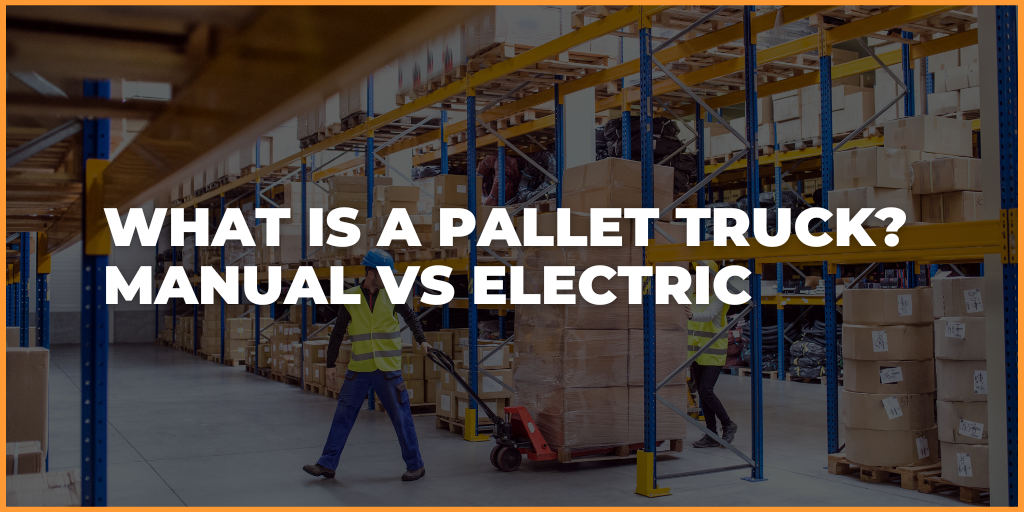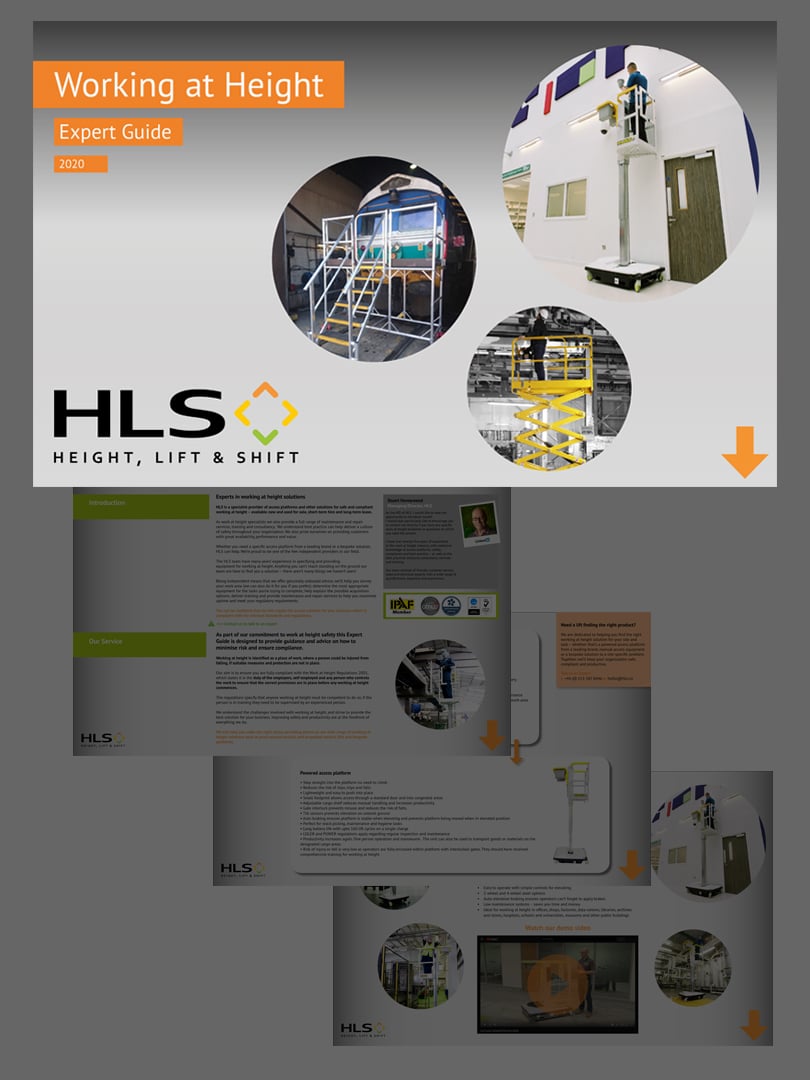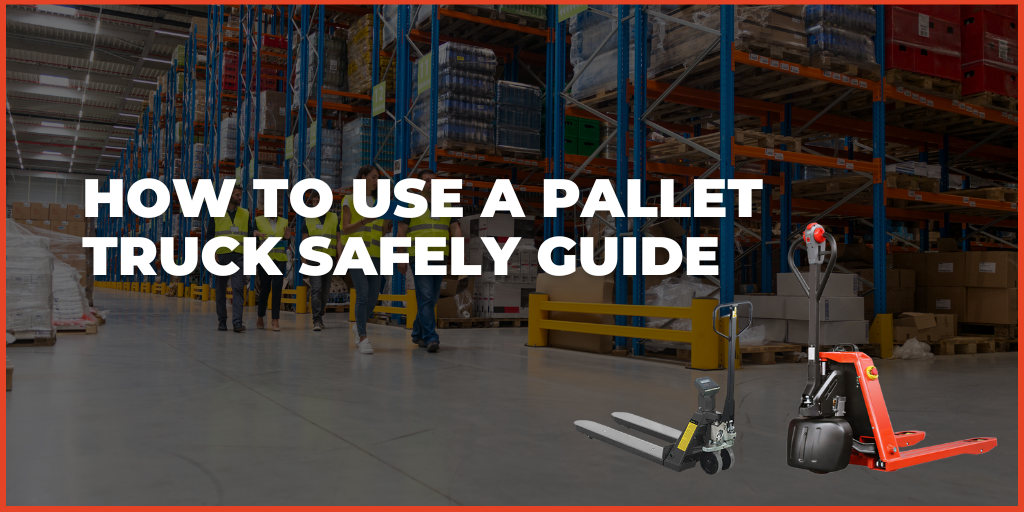Pallet trucks, often called pallet jacks or pump trucks, are some of the most widely used tools in materials handling. Compact, versatile, and easy to operate, they are designed to lift and transport pallets quickly and safely across warehouses, factories, and distribution sites. By reducing the physical strain of moving heavy loads, pallet trucks help improve workplace safety, cut labour costs, and boost productivity.
In this blog, we will cover:
- What a pallet truck is and how it works
- The key features and benefits of manual pallet trucks
- Why electric pallet trucks are ideal for more demanding operations.
- How to choose the right pallet truck for your business
- The significant role pallet trucks play in workplace safety.
Whether you are a health & safety manager, warehouse supervisor, procurement officer, engineer, or facilities manager, this guide will help you understand how pallet trucks can make your workplace safer, smarter, and more efficient.
What is a pallet truck?
A pallet truck (also known as a pallet jack or pump truck) is a piece of material handling equipment designed to lift and move pallets or heavy loads across short distances.
- Manual pallet trucks: Operated by hand with a pump handle, suitable for lighter loads and everyday use.
- Electric pallet trucks: Battery-powered for drive and lift, ideal for moving heavier loads more frequently with less strain.
They are one of the simplest, most cost-effective tools for any workplace that handles goods.
Key features of manual pallet trucks
Manual pallet trucks are the traditional choice for many businesses due to their simplicity and cost-effectiveness. These are operated by human force and are equipped with a handle, forks, and wheels. The key features of manual pallet trucks include:
- Ease of use: With a three-position handle allowing fingertip control, manual pallet trucks are user-friendly and require minimal training.
- Durability: Typically constructed with robust materials, manual pallet trucks are designed to withstand heavy-duty use in challenging environments.
- Minimal maintenance: These trucks have fewer components than their electric counterparts, resulting in lower maintenance requirements and costs.
- Versatility: Suitable for a variety of pallets, including CHEP and GKN pallets, manual pallet trucks can handle diverse material handling tasks.
Advantages of using manual pallet trucks
Manual pallet trucks offer several advantages that make them a preferred choice for certain operations:
- Cost-effective: With a lower initial investment and minimal maintenance costs, manual pallet trucks are an economical option for businesses with budget constraints.
- No power dependency: As they do not rely on batteries or chargers, manual pallet trucks are always ready for use and can operate in environments where power sources are unavailable.
- Lightweight and manoeuvrable: Typically weighing around 70 kg, manual pallet trucks are easy to manoeuvre, even in tight spaces.
- Safety: By allowing workers to lift and transport heavy loads without physical strain, manual pallet trucks help prevent injuries related to manual handling.
Exploring the benefits of electric pallet trucks
Electric pallet trucks, on the other hand, offer a range of benefits that enhance efficiency and productivity in more demanding environments. These trucks are powered by rechargeable batteries and feature motorised lifting and driving mechanisms. Key benefits include:
- Enhanced efficiency: Electric pallet trucks reduce the physical effort required by operators, enabling them to move heavier loads more quickly and with less fatigue.
- Continuous operation: With features like plug-in and out batteries and external chargers, electric pallet trucks can operate continuously across multiple shifts, making them ideal for high-demand settings.
- Precision and control: Equipped with advanced controls and features like turtle speed switches, electric pallet trucks offer precise manoeuvrability and operation.
- Safety features: Electric pallet trucks often include safety mechanisms such as polyurethane stabiliser wheels and mechanical spring rebound structures to ensure stability and reduce the risk of accidents.
Choosing the right pallet truck for your business
Selecting the appropriate pallet truck for your business involves assessing your specific needs and operational demands. Consider the following factors:
- Load capacity: Determine the maximum weight your pallet truck needs to handle. Manual trucks typically support up to 2500 kg, while electric models can vary.
- Operational environment: Evaluate the conditions in which the pallet truck will be used. For example, if you operate in a confined space, a manual pallet truck's lightweight and manoeuvrability might be advantageous.
- Frequency of use: If your business requires continuous operation, an electric pallet truck with a plug-in and out battery system may be more suitable.
- Budget: Factor in both the initial investment and ongoing maintenance costs. While electric pallet trucks have a higher upfront cost, their efficiency gains can lead to long-term savings.
Why pallet trucks matter for workplace safety
Pallet trucks are a simple but effective way to improve workplace safety, reducing common risks such as lifting injuries, fatigue, and slips or trips. By replacing manual carrying with controlled load handling, they protect employees, improve compliance, and create safer working environments. For health & safety managers, they are a cost-effective tool that demonstrates commitment to staff well-being and accident prevention.
Key safety benefits of pallet trucks:
- Reduce lifting injuries: Staff push loads instead of carrying, lowering the risk of back and shoulder injuries.
- Minimise strain and fatigue: Ergonomic design and smooth-rolling wheels ease physical effort.
- Prevent slips, trips, and falls: Controlled movement keeps walkways clear and reduces unbalanced lifting.
- Support compliance: Help businesses meet health and safety regulations while avoiding fines.
- Boost morale and culture: Safer conditions improve employee confidence, reduce absenteeism, and promote productivity.
Conclusion
In conclusion, both manual and electric pallet trucks have their unique advantages and are suited to different operational contexts. By carefully evaluating your business needs, you can choose the right pallet truck to enhance your material handling efficiency and ensure a safer, more productive workplace.
👉 Explore our full range of manual and electric pallet trucks today - https://www.hls.co/lifting-materials-handling-equipment









